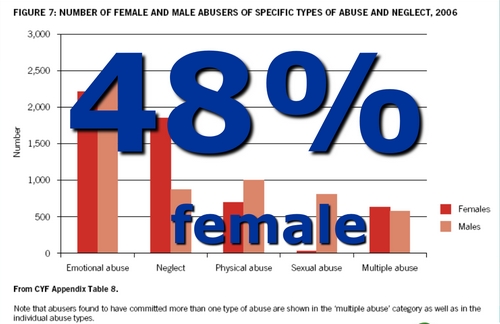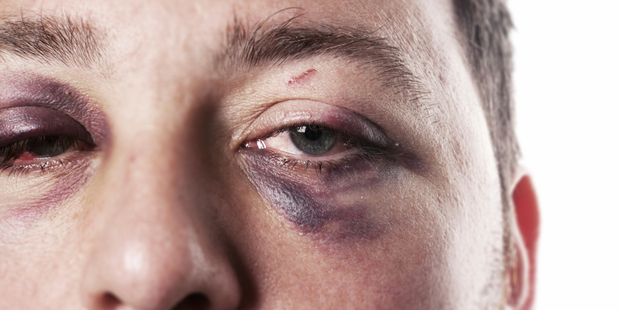Family violence is still not just a male problem
 REPRINTED from
REPRINTED from
NZ Herald 13 May 2016
The NZ Herald is to be congratulated for its series highlighting NZ’s atrocious record of family violence, but there is an inconvenient truth not being spoken, and reinforced by Kyle McDonald’s column Domestic violence is a male problem (May 11).
Kyle McDonald is partly right – but based on the facts, he’s also partly wrong. Family violence is not just a male problem.
If we as a nation are really serious about reducing family violence, we need to talk about family violence in all its forms and all its causes.
The last time I spoke up about this issue was in 2011 and the political response and condemnation was swift.
But I’m more interested in the facts and research and solving the problem than concerns around being politically incorrect.
Here are the facts.
The Ministry of Justice’s most recent NZ Crime and Safety Survey 2014 found that 6% of women and 4% of men were victims of violence from an intimate partner during the year, and that 26% of women and 14% of men have experienced partner violence at least once in their lifetime.
Last year, research conducted in association with the Department of Internal Affairs, Alcohol and Drug Association of New Zealand and the Canterbury Men’s Centre found that 38% of recent victims of family violence in the Canterbury region had been male and that male victims were not gaining support. The researcher said that media coverage has only focused on female victims and that there is reluctance for men to speak up as victims of family violence.
As one male victim shared in a story as part of the NZ Herald series this week, “I guess I kept it private because it was embarrassing. I eventually talked to a few close friends around the time we separated. They were shocked.”
The Family Violence Death Review in 2012 revealed that children were more often killed by their mothers than any other group of suspects, and that family violence death victims were almost evenly proportioned across male and female adults and children. The resultant heading in the NZ Herald was “Children most at risk from mothers.”
Where was the indignant outcry from the politicians then?
A 2009 report on family violence by the Families Commission – a government organisation – also identified that 48% of abuse and neglect in 2006 was committed by women. And just last year, Starship hospital child protection team leader Dr Patrick Kelly said “..In very young infants the mother can often be the offender, particularly if there are issues like postnatal depression.”

In the just-released Ministry of Social Development paper on gangs and their social cost, it said in relation to substantiated findings of abuse or neglect by gang members “Mothers were just as likely to be the alleged perpetrator as the gang member father”. Prominent New Zealand researcher Professor David Fergusson argues that we need to broaden our perspective “away from the view that domestic violence is usually a gender issue involving male perpetrators and female victims and toward the view that domestic violence most commonly involves violent couples who engage in mutual acts of aggression.”
Ex-ACT MP and journalist Deborah Coddington said “Men are physically stronger, cause more damage and fear, but women are abusers too and domestic violence can be mutual. We need to focus on where it happens, not politicise it by blaming all men.”
Ideology (and political correctness) is blinding us to the protection of all victims of family violence, and the need to tackle all perpetrators.
In the UK, data from the Home Office statistical bulletins show that men made up about 40% of domestic violence victims each year between 2005 and 2009.
In the USA, a 2010 report from California State University examined 275 scholarly investigations, 214 empirical studies and 61 reviews. It demonstrated that women are as physically aggressive, or more aggressive, than men.
And it’s not just heterosexual couples at war. The U.S. Center for Disease Control’s “National Intimate Partner and Sexual Violence Survey” found that same-sex couples reported levels of intimate partner violence at rates equal to or higher than those of heterosexuals, and that same-sex couples experience sexual violence at much higher rates than heterosexual men and women.
The Family Violence Research Program at the University of New Hampshire found that the overall rates of violence for cohabiting couples were twice as high as for married couples and the overall rate for “severe” violence was nearly five times as high for cohabiting couples as it was for married couples.
If we’re really serious about reducing family violence, we need to talk about family violence, our violent culture, and the role alcohol and drugs and family breakdown and instability play in fueling this environment.
We all – men, women and children – need to pledge to stop violence towards men, women and children.
We have a family violence issue – not a gender violence issue.
ENDS
http://www.nzherald.co.nz/family-violence/news/article.cfm?c_id=178&objectid=11638745






